Once in their lifetime, almost all dog owners think about Potty Training For Dogs.
This problem can occur in puppies as well as older dogs.
These reasons can be of three types-
a) The puppy who has been never potty trained,
b) Elder dog, has been trained but lately has started potty training regression,
c) Dog involuntarily defecates or urinates in other places where he has no control over it.
In this article, we try to explain potty training for dogs.
Table of Contents
Routine
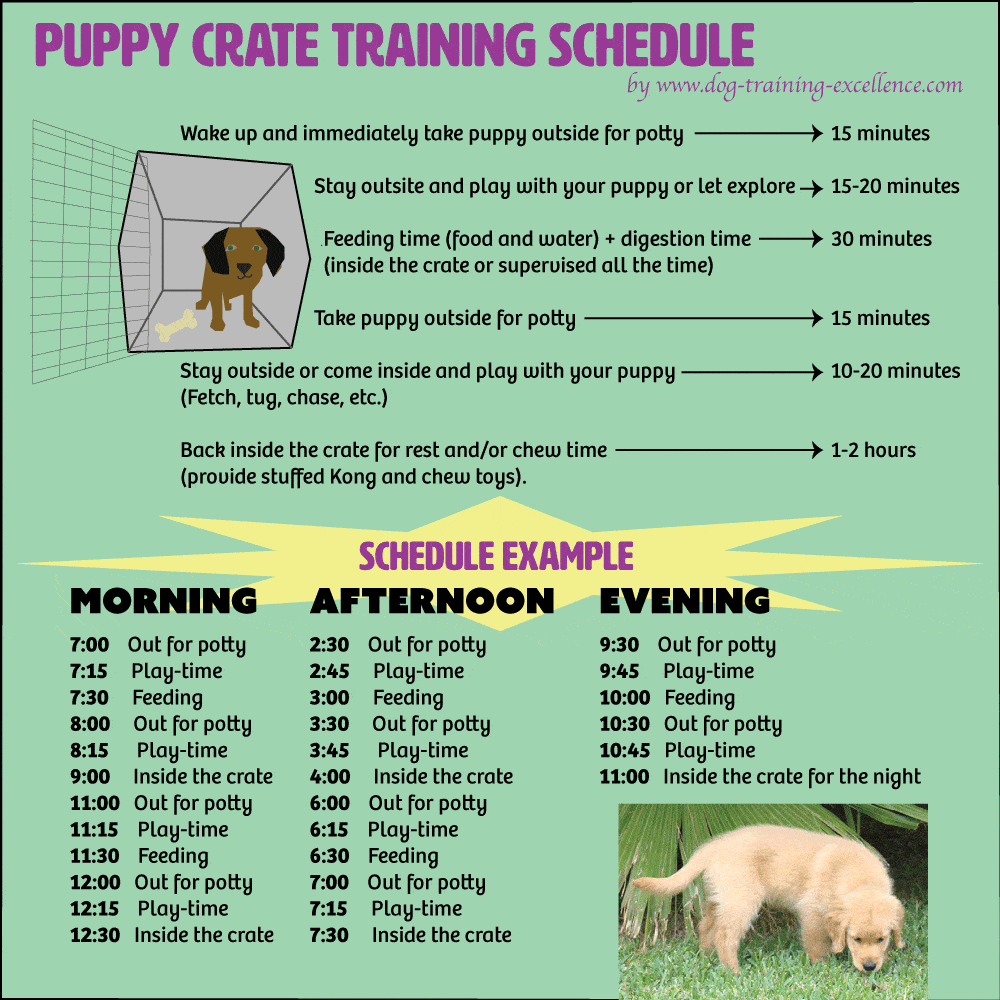
A puppy should have a routine for its daily activities.
Specific times for walks, naps, eating, exercise times and potty breaks helps the pup as well as the owner to have a consistent schedule to follow.
A one-month-old puppy can hold its bladder for one hour, a two-month-old puppy can hold it for 2 hours and so on.
But it should be noted that the dog should have scheduled toilet break in two hours and shouldn’t go beyond that.
Taking the dog on regular walks and exercise helps to build its metabolism, social skills, overall growth and helps it grow into a healthy dog.
Create a puppy potty training schedule as shown in the picture below.
Supervision
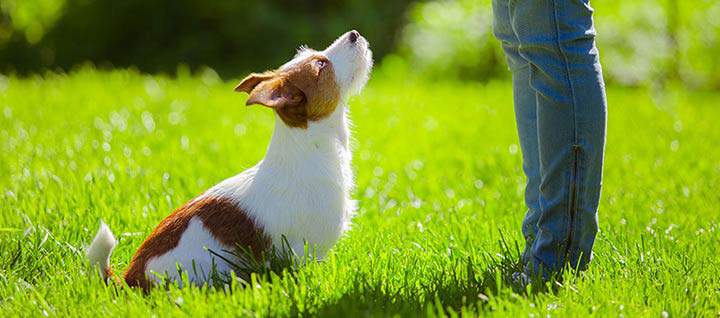
Supervision is a key element when you are potty training your dog.
You should be alert and aware of their actions.
Often dog behaviors provide a cue which signals that he may have to eliminate.
If your dog is confined and starts whining, circling, scratching, sniffing or barking then it indicates that your dog needs to go out and poop.
This routine has to go about for quite some time until the puppy starts to understand his specific times for elimination.
Feeding Schedule
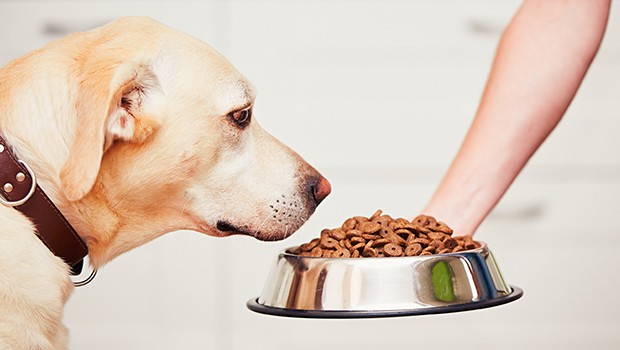
Follow a feeding schedule to let your pup get trained about his food timings.
This keeps his digestive system on a schedule and you can manage their trips outdoors better.
Fill the food bowl only when it’s their eating time.
Do not let the food bowl lie outside for the whole day.
Also, provide fresh water every 8 hours, rinse and clean the bowl and then refill the bowl.
Eating and drinking fresh items ensures that the dog doesn’t fall ill and poops regularly.
Confinement

Confinement is an essential part of the housetraining process.
Use a leash to tether a dog to a specific place in the room.
Give them space to roam around but not too far.
A puppy can also be confined by using baby gates.
Confinement is necessary so that the puppy or dog understands the difference between right and wrong places to poop.
The confinement area should mostly be small and cozy and just enough for him to sit, stand and sleep.
A dog pooping in the same place where he sleeps is less likely.
The reason why confinement is vital is that the dog should be able to “hold it”.
Another solution can be introducing crates to your dog.
They should be crate-trained in their puppyhood so that they get used to sleeping in a den-like structure.
This protects them from other hazards at home even when you aren’t supervising.
They are a good option when you are leaving the puppy in a crate while at work.
Refrain From Punishments
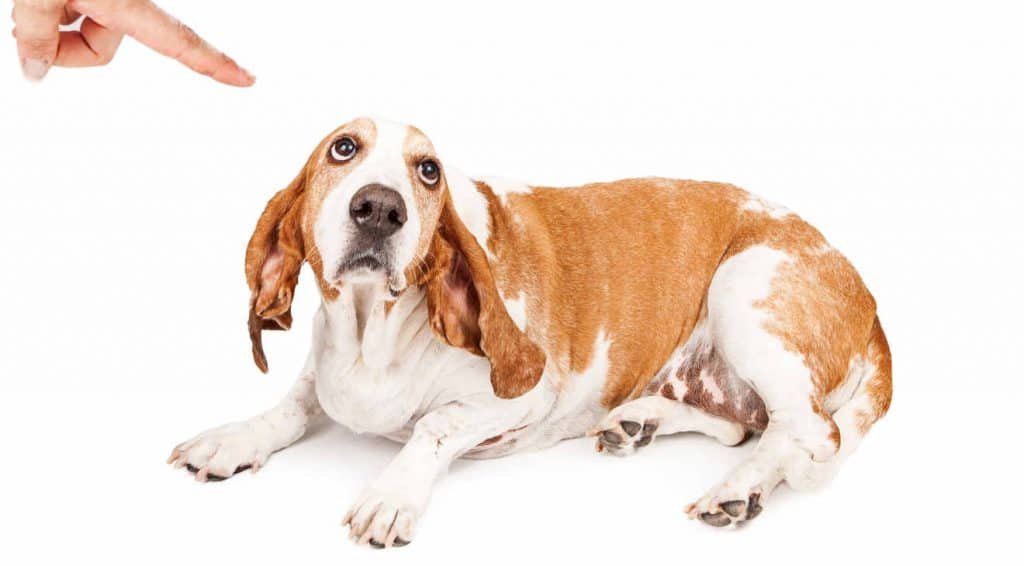
In the early stages of the training, your pup may have accidents (poop indoors).
In case you catch him in the act, make a distinct noise like a loud clap or tell him to “Go outdoors”, “go potty”, or just say “hey, hey” and point towards where he should potty.
Pick him up and let him finish outdoors.
If the dog has already done it when you weren’t around then just clean it without showing your anger on the dog.
Clean up the place with an enzymatic cleaner to eliminate the smell of their accident.
If that place still smells of their accident then chances are, they will try to poop on the same place again.
Punishing a dog would create fear or anxiety in the mind of the canine.
You wouldn’t want your dog to be afraid of you, would you?
Rewards
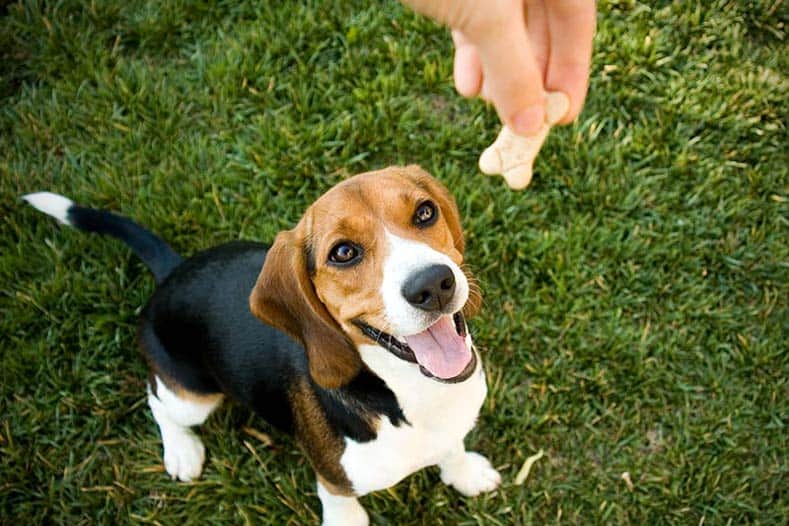
After the dog finishes eliminating in the right place, reward them.
Give them rewards only after they have finished.
Puppies may get distracted and forget about finishing.
Rewards act as a positive reinforcement for dogs to eliminate outdoor.
Every time he gets a reward, they take that experience to be rewarding.
Tools Needed For Training
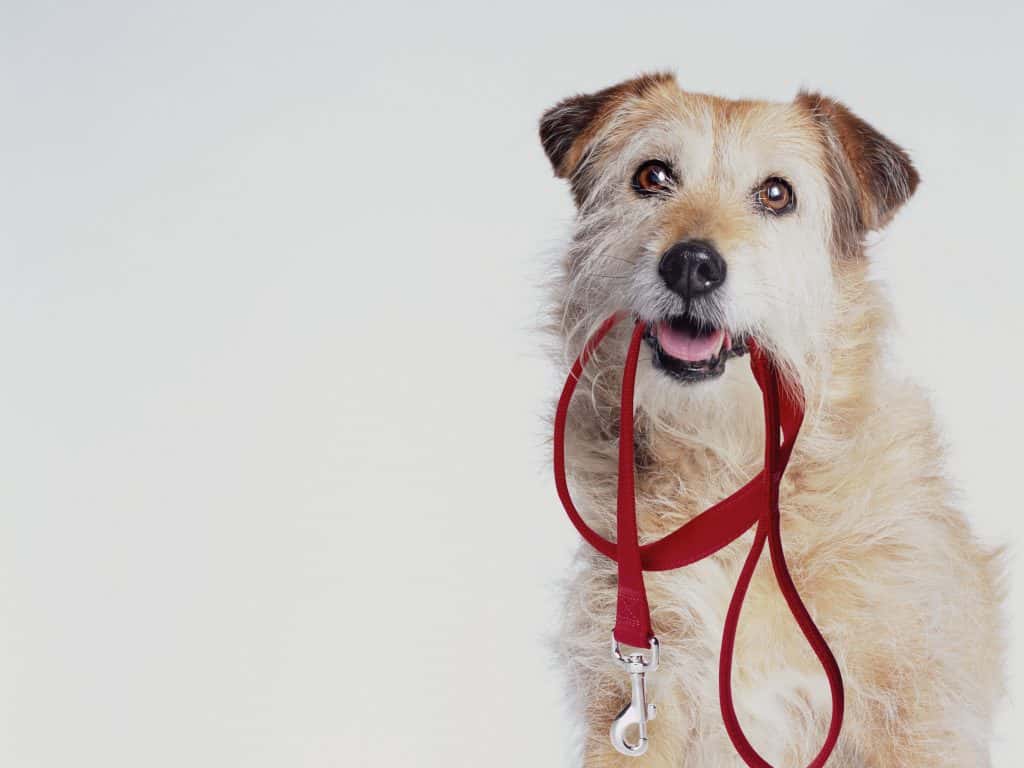
Before starting the training, make sure you have the things required to keep the dog in a place.
- A dog leash– Even if you have a fenced yard, you need a leash to guide the dog to the place where it is appropriate to defecate. Keep the treat ready for after he has finished. If it is a puppy then it would want to have fun instead of pooping so, the leash will let you keep him close to you and make him obey.
- A dog crate– Confinement would require a place for the dog to stay. Many owners do not like confining their dogs to crates because it seems cruel. A crate protects your dog from other hazards and gives him a sense of security. It gives him a defined place to sleep. If the pup is crate trained properly, it is beneficial for the dog owners to buy a dog crate for their pooch.
- A baby gate- For people who feel confinement in a crate is cruel, they can use baby gates for dogs effectively until the puppy gets taller in size. If the dog is unsupervised the dog has access to all the places in your house and can eliminate in other places. When you use the baby gate, your puppy can’t sneak into other parts of the house without your supervision.
- Treat- After a puppy finishes outdoors, treats will come handy as rewards for doing something good.
- Stain and odor remover- This will be used after accidents. The strong sense of smell of a dog would make him come to that place again to eliminate.
So, make sure you clean the place with a strong odor remover which prevents it to get attracted to the previously soiled spots.
Going Away From Home

If you’re going to be out for more than four hours, you may have to arrange for someone who will take the puppy for potty breaks in intervals.
A puppy aged 8-10 weeks old cannot hold his bladder for long so it will require frequent breaks.
An older puppy will have an increasing bladder capacity but it is still not advisable to keep him waiting for his break.
So, it’s good to arrange for someone or leave it at a friend’s house for giving it adequate breaks.
A puppy potty training requires a lot of attention and discipline to work out.
In the initial stages, you have to pay attention and supervise.
When it is fully potty trained, you need not pay attention because it won’t eliminate indoors.
Potty Pads
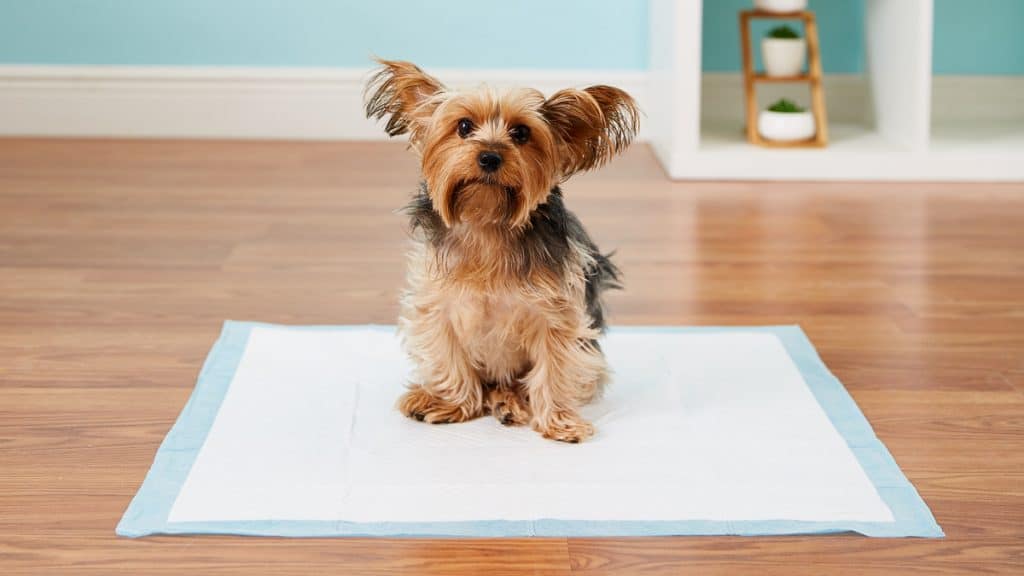
It is convenient and easy to clean up.
These are useful for people who keep their dogs in apartments or want to potty train their dogs to eliminate in a specific place indoors.
The dogs need to smell and feel the potty pad to get comfortable with it.
When you think they need to go to pee or defecate, take them to the potty pad.
This may take some time as the dog has to get used to its texture.
Potty pads also have some cons.
Once your dog gets used to potty pads indoors, he won’t be willing to poop outside.
Or if he is used to pooping both indoor and outdoor then he may get mixed signals and try to hold on until he can go out.
It can make him poop onto similar surfaces like a newspaper or a rug.
There can be a risk of coprophagia in which the puppies eat their own stool.
So, make sure you clean up after they have finished.
Potty pads are available in stores and online according to sizes.
Older dogs who have been trained but still soil the house.
Here are some points you must consider:
New environment
If a fully potty-trained dog starts pooping indoors when you have been to a different place, it means that the dog needs time to settle in the new environment.
The same applies to seasons when the dogs start becoming reluctant to going outside.
It may need relearning for a new season.
Helping your pooch to go out requires equal efforts from your side.
You may want to have a carpet to protect your dog’s feet from heated up surfaces in summer.
During winters, it may get difficult for a dog to go through the snow for short dogs so shoveling up the place would help them out.
Urinary infections or medical conditions:
If a dog is fully potty trained and still leaves behind pee or stool indoors, it is advisable to take him to the vet to check if there is any medical condition associated with this.
Marking:
During teenage, dogs get involved in marking because of changing hormonal levels.
This will need you to pay more attention to them before they soil any place.
Another helpful tool can be a belly band for dogs.
Fear, excitement or anxiety: Any external stimulus can influence such behavior of the dog.
Building an indoor potty area can be used until the effect of the external stimulus subsides.
If the dogs are involuntarily involved in soiling indoors then you must take them to the vet to know the underlying cause.
Age and Illness can be one of the reasons when they eliminate.
Now that you know what all to consider you can move ahead with your dog training.
Remember to be consistent with the training and stay positive even after setbacks.
Feel free to add any more tips!
Have any other suggestions about what works and what does not?
Comment down below!
Share the article with your friends who have doggos.
Read our previous article here: How to keep your dog cool in summer.



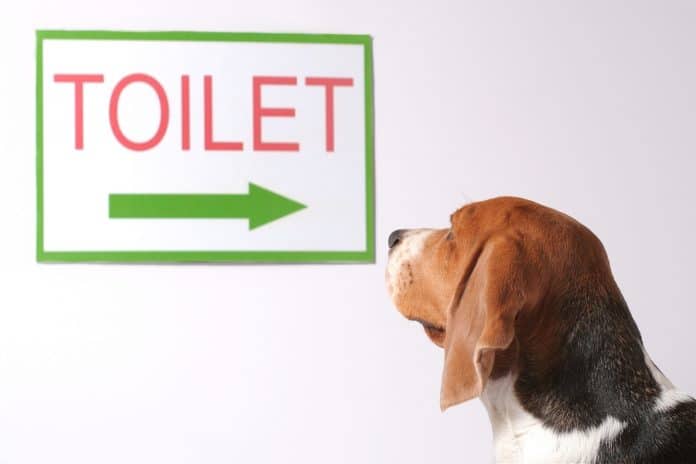









[…] training like obedience training, potty training, etc is necessary for you and your dog to live an organized and comfortable […]
[…] a correct dog shampoo is as important as potty training and hence it becomes necessary to ditch the human shampoos and get a dog […]
[…] like obedience training, potty training is essential to be taught at a young […]
[…] House potty training can be constant and owners can reward them with treats whenever they successfully follow their task. […]
[…] is essential to give the Dalmatian puppy with basic training such as obedience training, potty training, […]
[…] They involve Basic commands Training, Clicker Training, Respect Training, and Potty training. […]
[…] Taking care of dog’s dental health is as important as giving him potty training. […]
[…] such as potty training can begin with puppy stage in a Shih […]
[…] Confinement is an essential tool for potty training. […]
[…] training activities such as potty training would go a long way in making your Mastiff more […]
[…] can be quite easy for Miniature Schnauzer puppies to undergo potty training, in order to hardwire it into their system about potty rituals until they learn it perfectly by […]
[…] a training, the dog clicker sound is usually signaled when dog obeys the orders and hence shown as a positive […]
[…] Alder Lane Beach resides inside the Hilton Head’s Historic Forest Beach Community. This 12 miles shoreline is far from the hustle-bustle of the city life. Here, you can relax and soak the sun with your little friend. Dogs are allowed before 10 am and after 5 pm (from April to September). Dogs must be on a leashon this beach. The owners are required to keep the beach property clean by cleaning their dog’s waste. […]
[…] they may jump and lick total strangers and sometimes pee out of excitement. It is very important to potty train and socialize this breed to control their enthusiasm and love for […]
[…] training and obedience training can work out especially if done by her favorite person. Potty training can be a little issue but with a little patience, there isn’t any reason why you can’t train a […]
[…] to hunting freely. You can instead choose a hunting sport exercise for your hound. However, you may potty train them if you want them to behave with their pooping […]